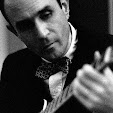One of the pitfalls of learning about American jazz music of the 20th Century is that it is conducted in retrospection. In looking back, it's often difficult to see, hear, and feel the currents that propels the music forward. Also there is the historian's tendency to look for patterns and once establishing said patterns filing subject matter accordingly. Read enough jazz history books, for example, and one might walk around with the nothing that the Modern Jazz of the 1940s has nothing to do with the original Jazz music as created in New Orleans decades earlier. Of course this was not helped at all by the "modernists" versus the "moldy figs" debate during the bebop era. Hype for sure, but it does belie the American cultural tendency to always be looking for the next big thing, often at the expense of what came before. What I have here is a wonderful musical example something that flies in the face of that kind of thinking. Sit back, read on, and be sure to dig the sound clips.
In 1901, a fellow by the name of Porter Steele composed a song for marching band ensembles titled "High Society". Now at the turn of the last Century marching bands were some of the more popular bands of the day, performing everything from said marches to light classics. They were mainstream and ordinary folks dug them. Fair now. But down in New Orleans, a clarinetist and guitarist by the name of Alphonse Picou was instrumental a developing a new style of music, which later came to be known as jazz. Picou, a contemporary and sometime bandmate of the legendary Buddy Bolden, adopted Steele's "High Society" for this new sort of combo and improvised a clarinet line based on the piccolo part of Steele's composition. Picou was later cited as a big influence by such players as Johnny Dodds and Jimmy Noone and "High Society" might very well be his lasting contribution to music as we shall see. Unfortunately, there is no early recording available featuring this first adaptation.
The first jazz recording of "High Society Rag" (retitled) was on June 22, 1923 by Kid Oliver's Jazz Band. Although recorded in Chicago (for Okeh Records), it featured such NOLA stalwarts as Dodds and Louis Armstrong (cornet). In fact, it is safe to say that it is a fairly authentic recording of classic hot New Orleans jazz...
The arrangement supposedly is fairly close to Picou's adaptation most importantly Dodds clarinet line. In fact, dig the little riff he plays at about 2:17. Go ahead. Go back and listen again. Now the more astute heads among you may already recognize the riff. But let's move forward a few years...
1937 and Benny Goodman is the recently crowned "King of Swing". I am not going to spend my time arguing the validity of this title, but I will say that jazz music was reaching its commercial zenith in terms of mainstream popularity and "Swing" was on the tip of every music journalist's pen. Goodman was an extremely popular bandleader at the time both through live appearances and regular radio broadcasts. To his great credit (and perhaps discrediting American social values of the time), Goodman hired pianist Teddy Wilson in 1935 and thereby was the first significant white bandleader to appear in public with a mixed band. A year later he further challenged the color barrier by hiring Lionel Hampton in the vibraphone. Benny had chops, could swing - plus he had the drumming genius of Gene Krupa. Needless to say, it was a good band. Now dig this clip of Benny and the band in 1937 (introduced by Rudy Vallee!). Be sure to listen closely when Hampton comes in for his solo - about 52 seconds into the clip...
Did you hear it? Yep. "High Society" again. With a little more swing and sounding more than a little more modern. So with that in mind let's move forward another 8 years...
On November 26, 1945, Charlie Parker entered WOR Recording Studios in New York City to record his first session as a leader. It was later issued as Charlie Parker's Reboppers on the indie small group swing and bop specialist label Savoy. His contracted pianist, Bud Powell, was a no-show; he was having trouble with his horn; and his trumpeter (19-year-old Miles Davis) was struggling with the tunes. Any yet he managed to record not 1 but 3 widely acknowledged modern jazz classics on the session, one of which was something of a magnum opus and one of the most explosive examples of modern jazz improvisation captured on disc to that date - and was rarely equaled in the years after. Check out "KoKo" paying particular notice to Bird's alto at about 1:18...
HIGH SOCIETY! Yet again. From jazz to swing to bop. Where could we possibly go from here?
One of he biggest jukebox hits of 1947 was a double-sided modern jazz tenor battle featuring two of the music's more swinging Lester Young disciples. "The Chase" recorded in June by Dexter Gordon & Wardell Gray for Dial Records managed to interpolate the "High Society" riff we have been looking at into the the full melody of the song! Dexter also takes it about as far as anyone could in the opening bars of the his solo (yes, he solos first). It's a beautiful evocation of what Central Avenue in Los Angeles probably sounded like on a good night in the late-40s and a great way to end this post...
OK, not quite. Just to bring it all back home, let's go back to Alphonse Picou with this rare clip of him near the end of his life in 1959 playing - yes, you guessed it - his own solo on "High Society"....












No comments:
Post a Comment